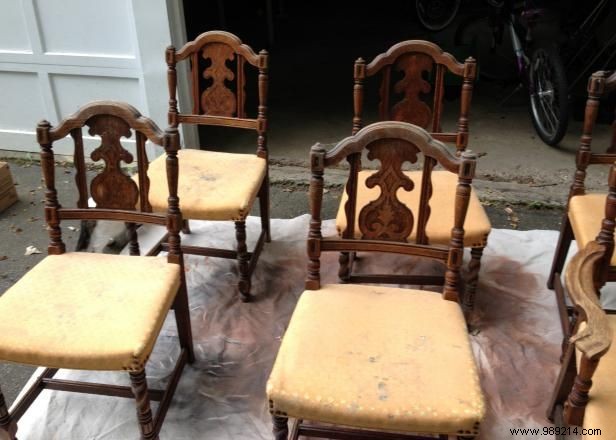
before
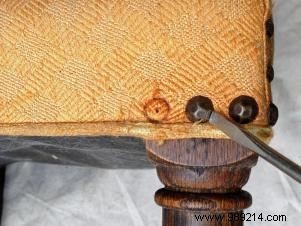
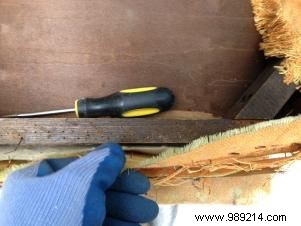
Use a flat-head screwdriver and pliers to remove the upholstery tacks and staples underneath. Don't throw away the fabric or cushioning, you can use them for the insoles. If the seats are different, number the bottom of the seat and the fabric you removed.
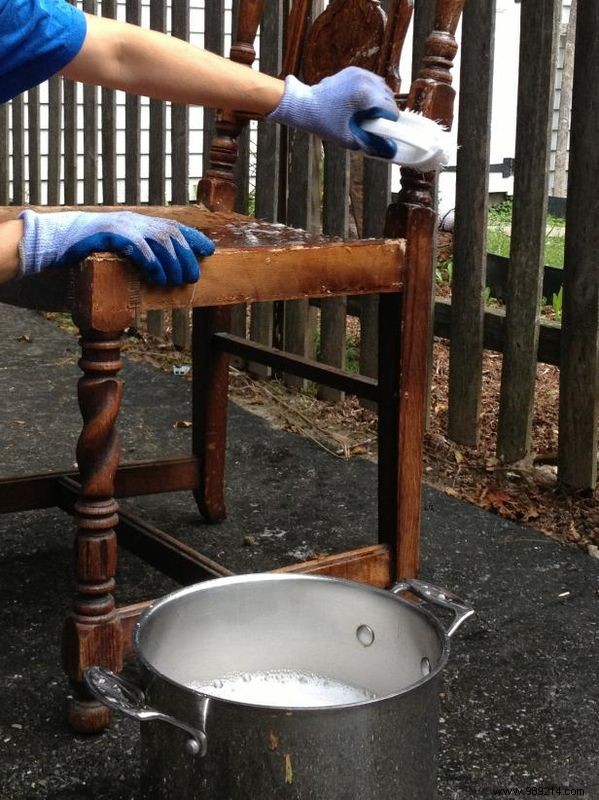
When the fabric is removed, wipe down the chair to remove dirt and grease buildup.
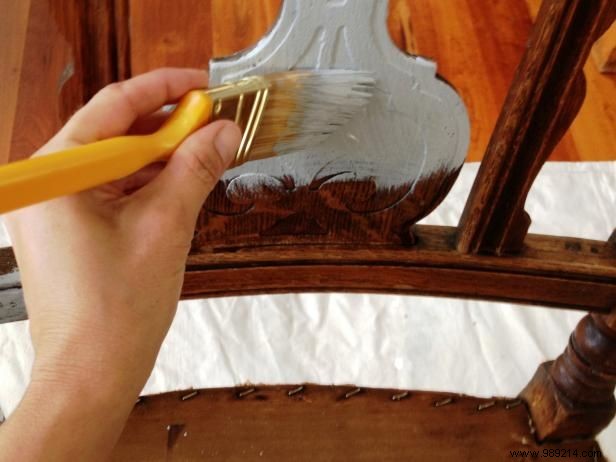
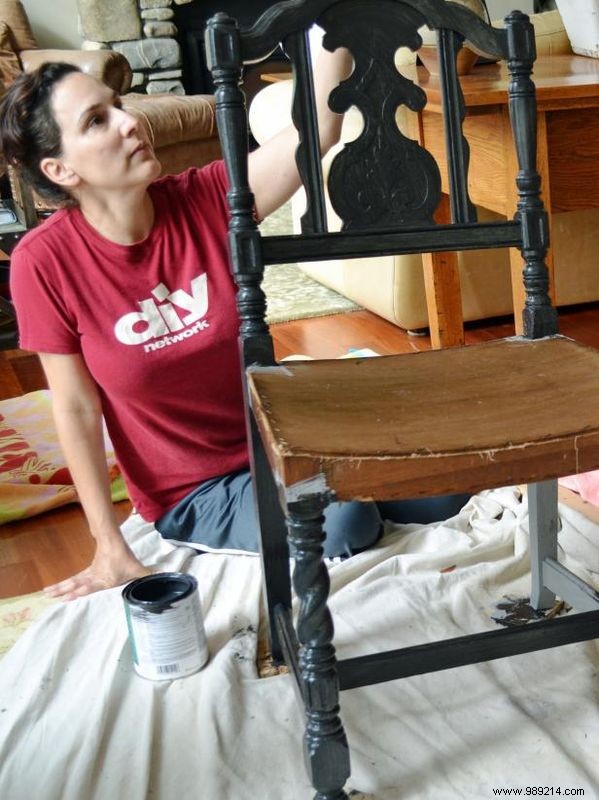
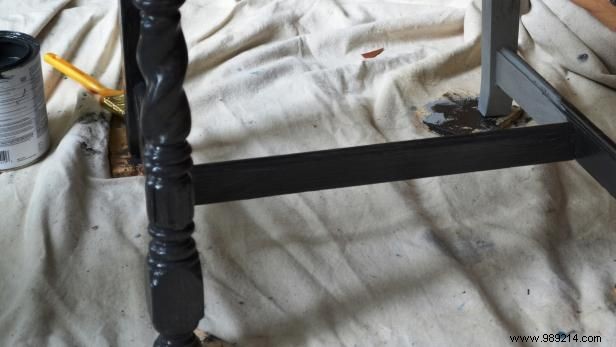
When the chairs are completely dry, apply a coat of primer to the entire surface. A coat of primer will help the paint adhere to the chairs better. When the primer is dry, add your first coat of paint (we used Mophead Black, Benjamin Moore). Let the chairs dry completely and then apply a second coat.
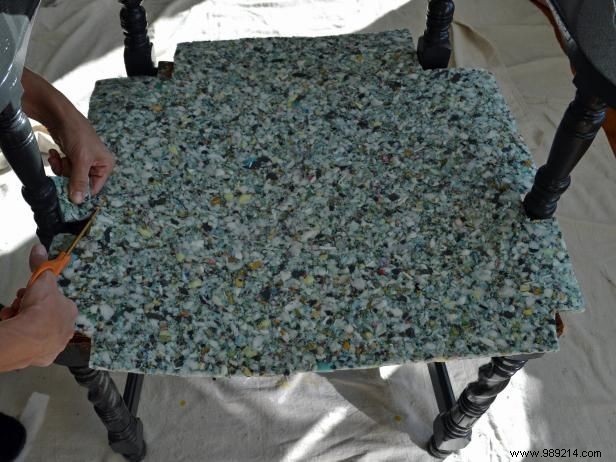
Use old fabric as a guide to cut out a piece of carpet padding for the chair. Lay the padding on the chair, and then cut out any details you may have missed. Make sure there is enough overhang over the side of the chair, you can always cut off the excess later.
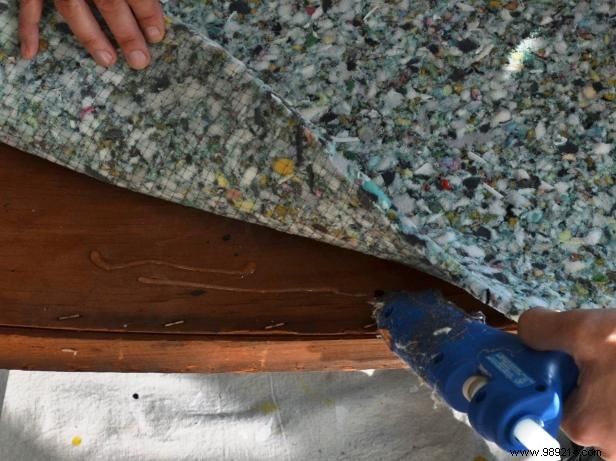
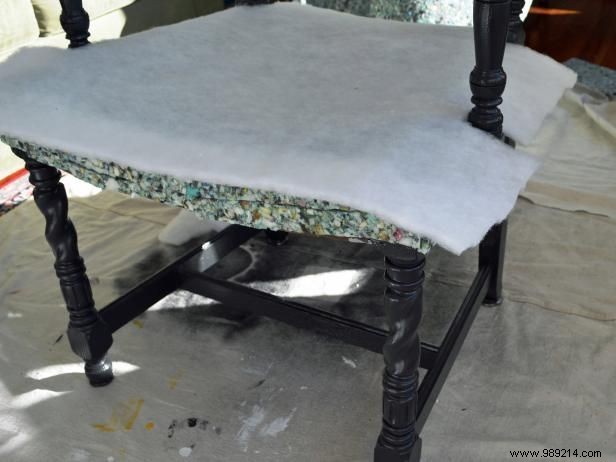
Use a hot glue gun to adhere the padding to the seat and sides. Hold in place while glue dries. To make it more cushiony, glue a second piece of rug padding on top of the first.
Cut a piece of quilted batting larger than the rug padding and place it on top. Use a hot glue gun again to adhere the batting to the padding.
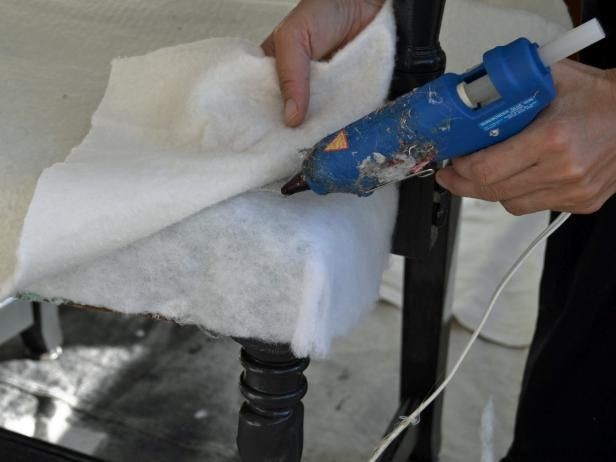
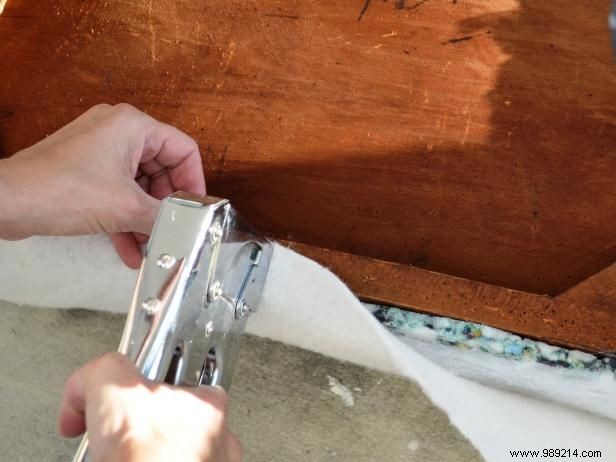
Use cotton batting for the final layer. Cut this cape so it hangs past the bottom of the seat. Glue the cotton batting over the quilted batting at the top and around the sides of the seat. After the glue has dried (usually just a few minutes), flip the chair over and staple the protruding batting to the bottom of the chair seat.
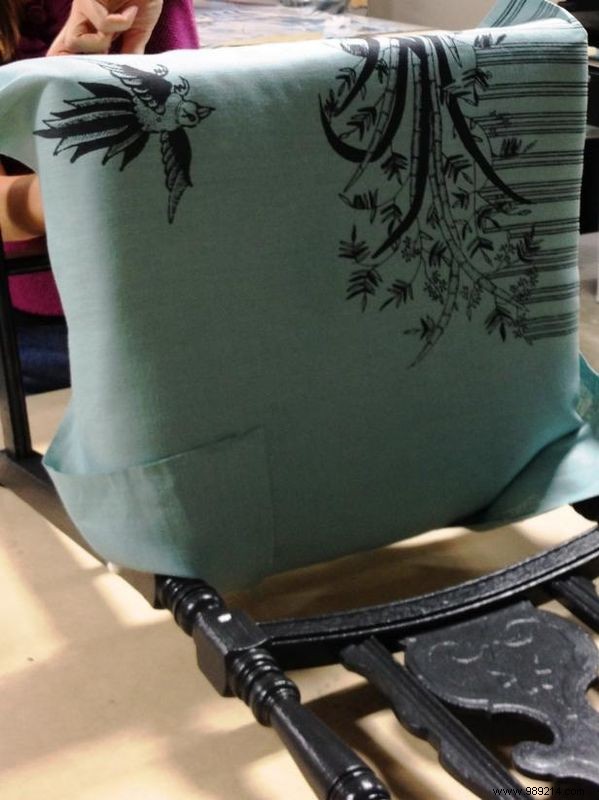
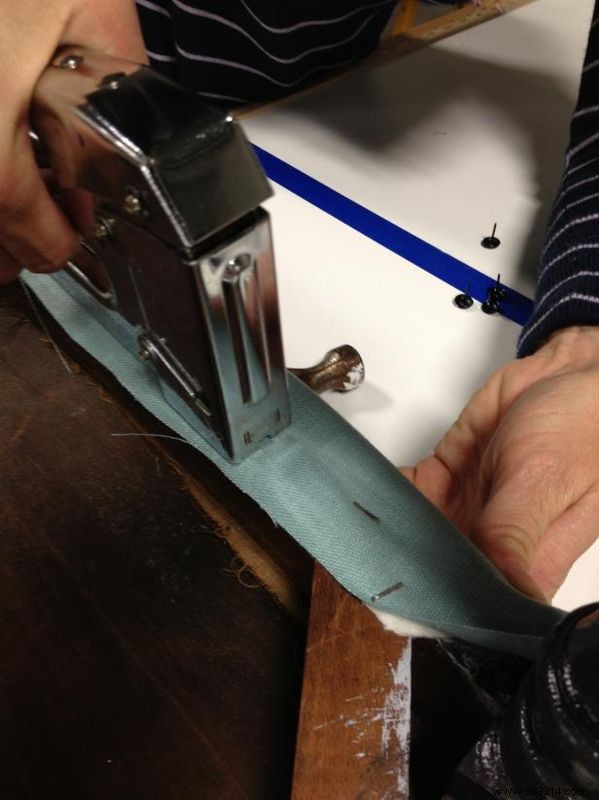
Again, use the old fabric as a template to cut out the new fabric. Lay the new fabric on the seat and make sure it is centered and smooth. You may want to put some straight pins on top to keep the fabric in place. Place a staple on each side, in the middle. Flip the chair upside down. Pull the fabric a little teasingly and continue to staple each side from the center to the corners. If necessary, use a hammer to drive the staples all the way down.
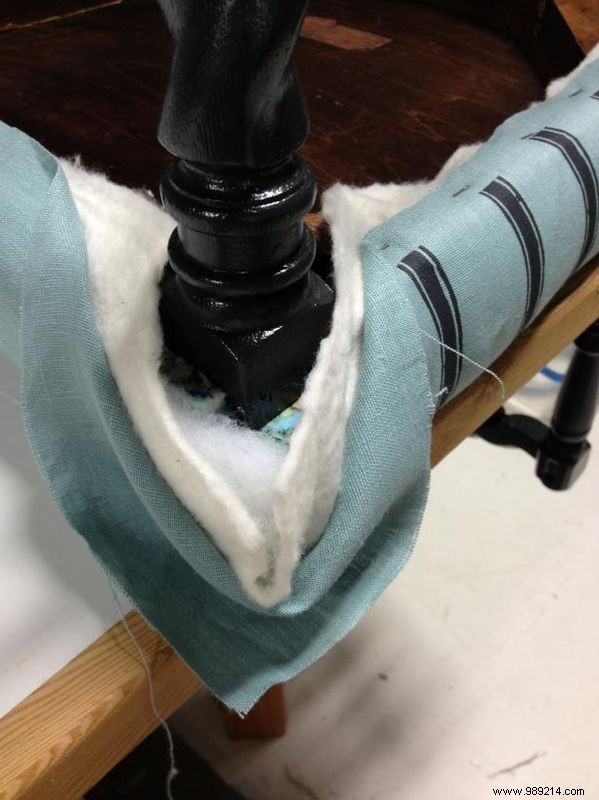
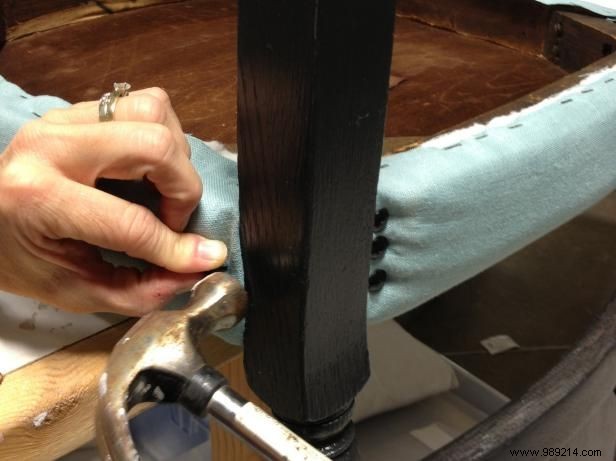
Leave enough room around the corners and legs to fold in. You may need to cut away some of the batting so the fabric will fold properly before you hammer in the upholstery tacks. We use three tacks for the side of each leg.